Rose Pierre de Ronsard
Looking at these roses, one involuntarily recalls the paintings of the masters who lived in the 17th or 18th century. The pink buds depicted on them are the same dense, densely doubled, as in the Pierre de Ronsard variety. Although the described species is not at all ancient, but creating it, the authors strove for just such a perception of the flower.

History of creation and names
The described variety was created by the French company Meilland International in 1985. This year marks the 400th anniversary of the death of the well-known French poet Pierre de Ronsard, in memory of whom the rose got its name - Pierre de Ronsard. To meet European growers, Meilland's agent in Germany, Klaus Strobel, was asked to introduce the plant under a different name, since the French poet was not so well known in the rest of Europe. Therefore, the beautiful plant associated with the flower of paradise had new names Eden Climber and Eden Rose (Eden Rose 85 or 88 - the numbers indicate the year of creation and registration). We registered a new product called MELviolin. The variety described should not be confused with others that bear nearly identical names - the hybrid tea Eden Rose, bred in 1950, and the climbing form of the Eden Rose, known as Eden Rose, CI, created in 1962.
The Pierre de Ronsard variety is the first in the "Romantika" series. This series brings together a group of plants with dense double flowers, reminiscent of the "old" form, and possessing the strength and health of modern varieties. Our heroine belongs to the climber - climbing roses with strong and tough shoots. The untitled maternal form, derived from the crossing of the Dance des Sylphes and Handel climbing large-flowered roses, was treated with the pollen of the Floribunda Pink Wonder, CI.

Over the years of its existence, the paradise beauty has won many awards. In 2000 - 2001 she was awarded 5 times by the American Rose Society in the category "Climber". In a 2006 poll among participants from 37 countries, Pierre de Ronsard received an honorary place in the World Association of Rose Society Hall of Fame.
Description
In the patent application, the plant is indicated as a shrub, not too vigorous, with a height of 150 to 300 or 350 cm. The bush is branched, up to 200 cm in volume. It looks compact. Shoots are thick, arcuate, although rather rigid, spines are sparsely located. Shoots are great for creating arched structures or entwining any other shape. The leaves are large, dark green, hard to the touch, semi-matt surface, jagged edges.
The flowers of Pierre de Ronsard are highly decorative, with the charm of old roses. The size is impressive - the average diameter is 9-10 cm. But the buds of the first wave can have an even larger diameter - almost 15 cm. The stem bears from one to three cupped, spherical buds, with long petals, the blooming process takes place slowly. The color combination is very successful and delicate. The petals are cream or ivory, the edges are deep pink or carmine pink. It should be noted that the color range is sometimes changeable, the inner petals can be pink, the outer ones are white, sometimes with a greenish tint. The flower buds are dense, dense and heavy, each with about 55-60 petals (and even more), so the flower brush droops under its weight, which does not spoil the overall impression, on the contrary, it is attractive.

Bloom
Pierre de Ronsard belongs to the re-flowering species. The first flowering of a rose is striking in its abundance and large flowers. The bush is literally covered with delicate flowers from top to bottom. After the first wave of flowering subsided, a period begins when there are fewer flowers and their size is more modest. But the process of their formation does not stop, they appear constantly. Created for the Mediterranean countries, which are dominated by a hot and dry climate, our heroine is able to show all the beauty of a fully blossoming flower.But, unfortunately, in cool and humid climates, flowers often wilt, never fully opening.
Characteristics
- Shoots at Pierre de Ronsard grow slowly, so you can judge the decorativeness of the bush starting from the age of 3 years of the plant;
- the flowering period is quite long - you can admire the delicately colored buds from June to September;
- Usually, the scent of a rose causes migraine attacks or dizziness for many. But Pierre de Ronsard has a very light aroma, almost imperceptible;
- average frost resistance, according to the US Department of Agriculture (USDA), corresponds to zone 6, that is, the bushes can withstand frosts at -23.3 ° C;
- disease resistance is high, especially to black spot and powdery mildew;
- from high humidity, flowers may suffer and not fully open.
Agrotechnics
When planting a lover of heat on a flower bed, try to allocate for her the sunniest area, which is protected from drafts, but at the same time is periodically blown by a light breeze. The best time to plant is spring. Before planting, the soil is carefully dug up, fertilized, if necessary, the acidity level leads to neutral indicators. In the spring, before the buds appear, the rose is fed with nitrogen. During the flowering period, the queen of the flower garden should be pampered with phosphorus, potassium, magnesium and calcium. It is best to select universal balanced fertilizers so as not to be confused in dosages. Since Pierre de Ronsard can live for 15 years, choose a place for her carefully, having thought out the composition in advance. It can be planted both as a single plant and in group plantings. Do not forget that for a spreading bush, the planting pattern should be at least 2 × 2 meters, otherwise thickening cannot be avoided, and this will negatively affect the flowering of the rose. Be sure to carry out autumn pruning, removing faded shoots 3 - 5 years old, shorten the growth of this year by 1/3. In warm regions, the bushes are not covered for the winter, but in cool lashes they are carefully removed and laid on a bed of straw. Cover with dry leaves and spruce branches from above.
Pierre de Ronsard will bring a romantic touch to your garden and make it more comfortable. The climbing plant is used with pleasure in landscape design, because behind the flower wall you can hide any unsightly fence or blank wall of the house. Flowers proved to be excellent in cutting, they stand in a vase for a long time. The unpretentiousness and resistance of the rose to disease make it very easy to care for it.
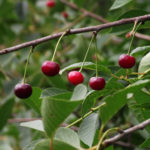
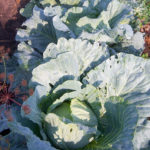
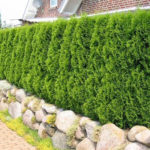
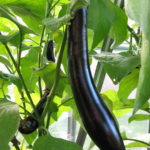
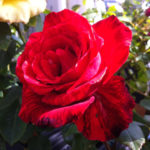
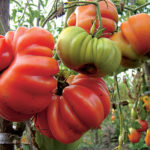



The most beautiful rose in the garden. You can't just walk past her without admiring the flowers that resemble the cream on the cake. Densely double buds are so tightly stuffed that sometimes they do not even bloom to the end, the petals do not have enough space. The flowers are creamy, with a crimson center, fade to pale pink in the sun. Despite the heat, the flower lasts a very long time. In the rain, the flowers droop under the weight of the water, but do not crumble. And as soon as the sun warms up, the rose is again in all its glory. The bush itself is not tall, compact, beautifully shaped. It can be run on the support, it can be cut into a round shape. After planting, the bush grew very slowly, at first I even thought that it was not a climbing rose. But gradually, having gained strength, it can now release rather long shoots in a season. The leaves are dark green, glossy, there are very few thorns on the shoots, which is also a plus. Blooms all summer, although the first bloom is the most abundant. This rose has a very high resistance to all diseases and pests, it has never been sick with anything. Every summer you expect it to bloom.
I agree - the rose is very beautiful, but it has so many shortcomings and problems that I got rid of it without pity. I'll tell you in order: the buds are very dense - there are so many petals that the buds open with great difficulty (often the outer petals already lose their appearance, and the flower has not yet been opened), various beetles like to feast on buds (Bronzovki, Alenki) - it happens that the first flowering does not happen, since the buds are completely eaten, normal flowering begins only in the second wave, but it does not last long - as soon as the rains begin, the flowers and buds begin to rot (but if the autumn is dry, then it is impossible to take your eyes off the roses), to diseases the immunity of the variety is not very high - it is often affected by rust and powdery mildew.
Maybe she doesn't like your climate